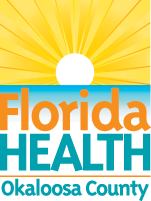Frequently Asked Questions
Contact us
- 850-833-9247 / 850-689-7859
-
Mailing Address
221 Hospital Dr. NE, Fort Walton Beach, FL 32548
810 E. James Lee Blvd., Crestview, FL 32539
- What is the Healthy Beaches program?
- What causes the health department to issue an advisory?
- How are the water quality results of Good, Moderate and Poor defined?
- What are enterococci?
- Can I swim or wade in the water when an advisory is posted?
1. What is the Healthy Beaches program?
Coastal beach water samples are collected every other week from designated public beaches in Okaloosa County from March to October. Results are shared via press release no later than Thursday of the sampling week. The samples are analyzed for enterococci bacteria. High concentrations of these bacteria may indicate the presence of microorganisms that could cause disease, infections, or rashes. The health department issues health advisories when enterococci levels exceed the acceptable level at the time of the sample collection.
Top of Section2. What causes the health department to issue an advisory?
Swimming in natural water bodies is always at your own risk, regardless of whether or not an advisory is issued. If the health department has issued an advisory, it is because enterococci bacteria have exceeded the acceptable level at the time of bi-weekly sampling.
Top of Section3. How are the water quality results of Good, Moderate and Poor defined?
The following water quality classifications are used by the Florida Department of Health and are based upon the United States Environmental Protection Agency (EPA) recommended standard for enterococci.
The classification standard is:GOOD: 0-35 colony forming units (CFU) per 100 milliliters (ml) of marine water
MODERATE: 36-70 CFU per 100 ml of marine water
POOR: greater than 70 CFU per 100 ml of marine water
Healthy Beaches test results are a reflection of a water sample taken at a point in time. As such, bacteria levels may change between testing periods. For example, significant rainfall with storm water runoff between testing periods may result in elevated levels of enterococci bacteria in the water.
Top of Section4. What are enterococci?
Enterococci are bacteria found in the intestines of all warm-blooded animals, including humans. Because these bacteria are easy to detect and commonly found in animal and human waste, they are used as indicators of recreational water quality conditions. Enterococci are the organisms that the U.S. Environmental Protection Agency (EPA) recommends using to measure bacteria levels in recreational water.
Top of Section5. Can I swim or wade in the water when an advisory is posted?
That is your personal decision. The Health Department is advising you to not enter the water if the beach is under an advisory. There is a risk of illness from contacting beach water with elevated bacteria levels by ingesting water; by getting water in the nose, eyes, and ears, or by water making contact with an open wound.
For the vast majority of people, the risk of serious illness is minimal. An otherwise healthy person may have no problems with contact with the water of a beach that is under advisory. Some may experience a minor inflammation of a cut, a mild sore throat or mild diarrhea after exposure to water from a beach under advisory.
The greatest risk is for very young children, the elderly and people who have compromised immune systems since their ability to fight off infection is limited by age or disease.
Top of Section



Connect with DOH